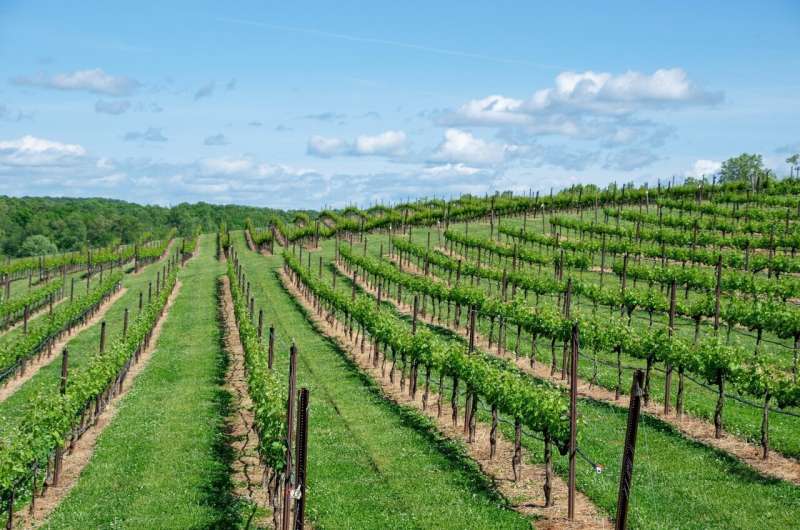
Researchers have developed a multistep process to quantify the dependency of international trade and nature’s contributions to people. With their new approach, which has been published in People and Nature, the researchers hope to improve knowledge about the complex relationship between nature and international trade.
Humans are dependent on nature: It provides essential ecosystem services, such as clean water, food, and a variety of raw materials; it regulates the climate, and it offers space for a wide range of recreational activities. All of these benefits are nature’s contributions to people (NCPs).
In a globalized world, consumers are increasingly disconnected from NCPs, as many everyday products are produced in distant parts of the world. Agricultural products, in particular, are heavily dependent on NCPs, and NCPs are, in turn, affected by human activities and decisions, such as how land is used and managed.
But how exactly is international trade linked to NCPs, and how can this link be made more tangible and comparable? With the help of an international team led by the synthesis center sDiv at the German Center for Integrative Biodiversity Research (iDiv), the researchers developed a multi-step process to help quantify the dependency of international trade on NCPs.
To this end, the scientists analyzed different studies about internationally traded products and nature’s contribution to these products. “This paper is one of the first to explicitly examine the relationship between NCPs and international agricultural trade,” says first author Alexandra Marques, senior researcher at PBL Netherlands Environmental Assessment Agency. “This aspect isn’t frequently studied nor quantified.”
Everyday products depend on services provided by nature
Foods such as coffee and cocoa would not exist without the help of pollinators, and many other staple products also depend on the various services nature provides. However, there is currently limited data available to trace a bar of chocolate, for example, back to the fields where the cocoa beans were grown.
“And it is even more complicated to disentangle which proportion of that bar of chocolate is in the end created by pollinators, let alone how big the contribution of the pollinator habitat is,” says senior author Nynke Schulp, Associate Professor at Vrije Universiteit Amsterdam.
NCPs can also include cultural or value-based contributions. “While there is knowledge on how agricultural products depend on some types of NCPs, this is much less so for other types of NCPs, such as non-material NCPs,” says Alexandra Marques.
Cultural or non-material NCPs include local knowledge and values linked to an ecosystem that has an impact on the products produced locally. Approaches that account for non-material NCPs include the concept of terroir in viticulture, i.e. the interplay of soil, climate, topography and many other factors.
A seal of origin that is based on terroir—for example, in France through the Appellation d’Origine Contrôlée (AOC)—creates awareness among consumers of the respective region and the distance that the product has traveled. The concept is also increasingly recognized for cheeses such as Comté, whisky or, more recently, bat-friendly tequila.
Many pieces of the puzzle still don’t provide a complete picture
By analyzing the individual studies as pieces of a larger puzzle, the researchers arrived at a three-stage process that can, in principle, be applied to all agricultural and internationally traded products: 1) spatial mapping of NCP’s supply and demand; 2) linking spatial mapping with agricultural products; and 3) tracing international trade flows. This approach can already be applied to certain products. For example, the team is currently working on quantifying some of the dependencies related to the trade of coffee and soy from Brazil.
However, in order to link NCPs with even more agricultural products, researchers need transparent data on the respective trade flows and the regions where these goods are produced and consumed.
“In principle, the current state of technology can solve this bottleneck, for example, through satellite images, artificial intelligence, and high computing power,” Nynke Schulp says. “The challenge now lies in data proprietary rights and privacy. Appropriate legal frameworks are needed here.”
With their new approach, the researchers hope to improve knowledge about the complex relationship between nature and international trade, adding to biodiversity assessments and to the work of the Intergovernmental Science-Policy Platform on Biodiversity and Ecosystem Services (IPBES) and other bodies.
A better understanding of NCP dependencies in different production processes will also support implementing Target 15 of the Kunming Montreal Global Biodiversity Framework, which requires businesses to disclose and assess their dependencies on nature.
“We are very happy that we can foster global collaboration among leading scientists at our international iDiv synthesis center, and assess how agricultural trade affects biodiversity in distant countries,” says Professor Dr. Aletta Bonn, head of Biodiversity and People at iDiv, the Helmholtz Center for Environmental Research (UFZ) and Friedrich Schiller University Jena.
More information:
Alexandra Marques et al, The role of nature’s contributions to people in sustaining international trade of agricultural products, People and Nature (2024). DOI: 10.1002/pan3.10607
Disentangling nature’s contributions to international trade (2024, February 23)
retrieved 24 February 2024
from https://phys.org/news/2024-02-disentangling-nature-contributions-international.html
part may be reproduced without the written permission. The content is provided for information purposes only.